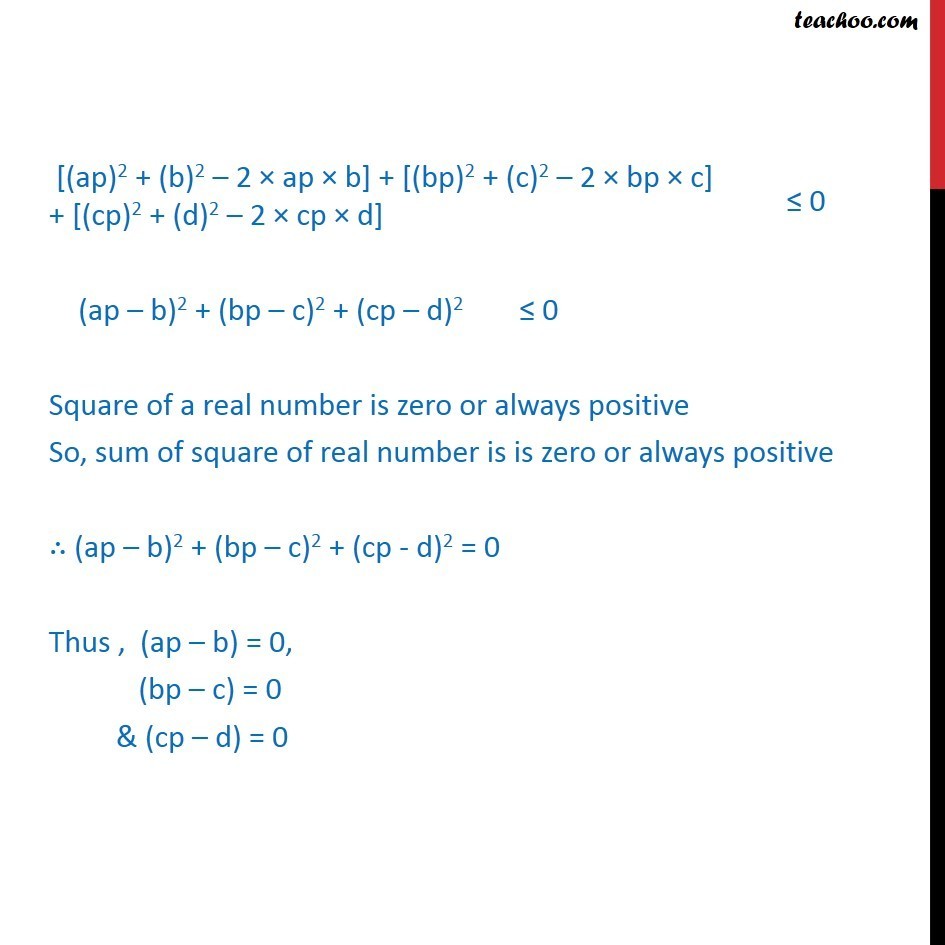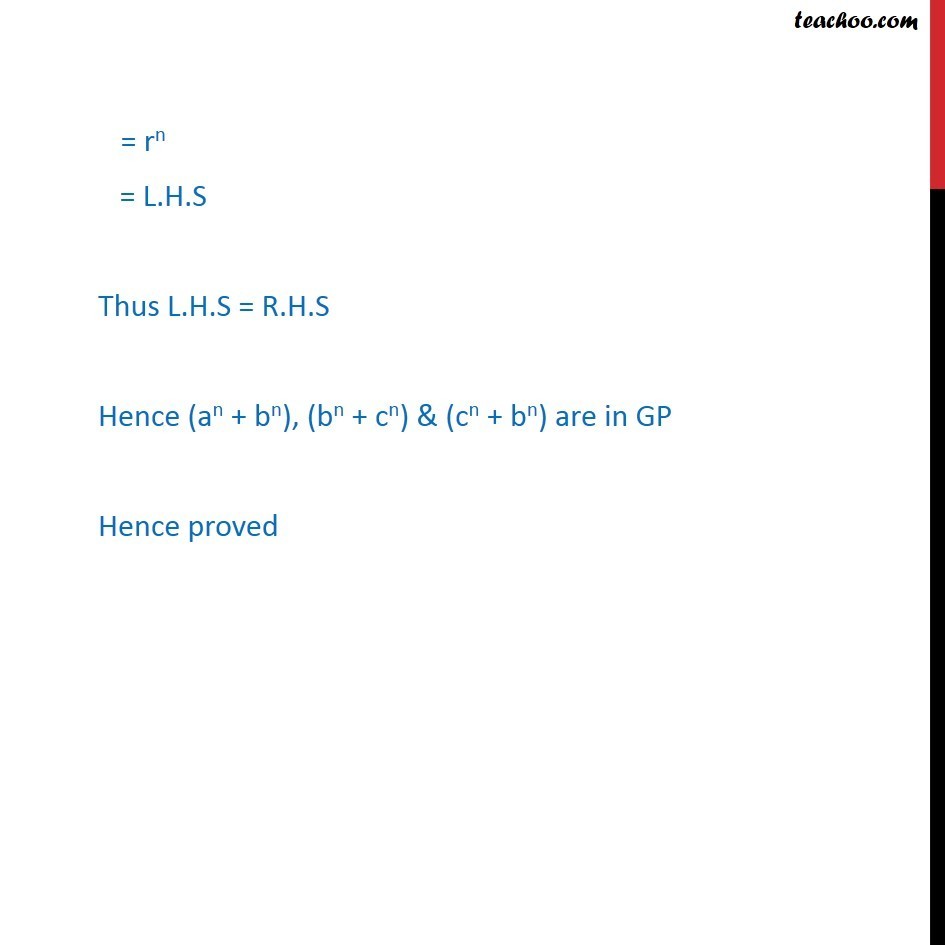



Examples
Last updated at Dec. 16, 2024 by Teachoo




Transcript
Question 9, If a, b, c, d and p are different real numbers such that (a2 + b2 + c2)p2 2(ab + bc + cd) p + (b2 + c2 + d2) 0, then show that a, b, c and d are in G.P. Introduction If x2 + y2 + z2 0 So, if x2 + y2 + z2 0, x2 + y2 + z2 = 0 i.e. x = 0, y = 0 , z = 0 Question 9, If a, b, c, d and p are different real numbers such that (a2 + b2 + c2)p2 2(ab + bc + cd) p + (b2 + c2 + d2) 0, then show that a, b, c and d are in G.P. We need to show a, b, c & d are in GP So, common ratio must be same we have to prove / = / = / It is given that (a2 + b2 + c2) p2 2 (ab + bc + cd) p + (b2 + c2 + d2) 0 Solving a2p2 + b2p2 + c2p2 2abp 2bcp 2cdp + b2 + c2 + d2 0 (ap)2 + b2 2abp + (bp)2 + c2 2bcp + (cp)2 + d2 2cdp 0 Question 9, If a, b, c, d and p are different real numbers such that (a2 + b2 + c2)p2 2(ab + bc + cd) p + (b2 + c2 + d2) 0, then show that a, b, c and d are in G.P. We need to show a, b, c & d are in GP So, common ratio must be same we have to prove / = / = / It is given that (a2 + b2 + c2) p2 2 (ab + bc + cd) p + (b2 + c2 + d2) 0 Solving a2p2 + b2p2 + c2p2 2abp 2bcp 2cdp + b2 + c2 + d2 0 (ap)2 + b2 2abp + (bp)2 + c2 2bcp + (cp)2 + d2 2cdp 0 Solving (ap b) = 0 ap = b / = p Solving (bp c) = 0 bp = c / = p Solving (cp d) = 0 cp = d / = p This implies that (b )/a = (c )/b = (d )/c = p Hence a, b, c and d are in G.P.